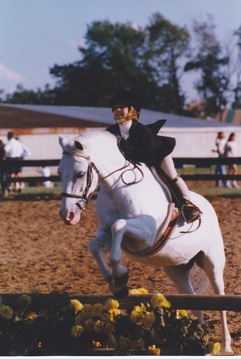
Learning from Passions
"We wanted you two to be able to follow your passions" (Mom).
"If you could make your day exactly how you wanted it, what would you do?" (Dad).
Lovemaking vs. Drowning Models of Learning
Happiness studies expert Tal Ben-Shahar describes education in two forms: the drowning model and the lovemaking model. The drowning model consists of “the desire to free ourselves of pain” as a strong motivator (Ben-Shahar 83). Therefore, students work toward a goal—symbolized as drowning—and then the achievement is the pay off: when they rise out of the water and can breathe again. The lovemaking model looks upon the “pain period” in the drowning model—researching, thinking, writing, reading—as not "pain," but curious and fun foreplay: “when the boundary between knowledge and intuition breaks, when we reach a solution to a problem, for instance—is like the climax” (Ben-Shahar 84). Both models have an end goal in sight, but one “derive[s] satisfaction from everything along the way” and one creates discomfort until the finish (Ben-Shahar 84).
Reasons for Homeschooling
My parents wanted my sister and me to be educated in a way where we enjoyed the whole process of learning and felt that we had agency in creating our lives; they would not tell us it was a "lovemaking" process, but it fit into the category that Ben-Shahar describes above. This led to their decision to begin my education through homeschooling and to take my sister out of her Waldorf school at the age of seven to start homeschooling.
Growing up, my dad was not a fan of the public school system. He remembers those years and that space as not particularly intellectually invigorating, causing more stress then enjoyment. After completing his undergraduate degree in history, teaching at a middle school in Detroit, and completing a master's degree in psychology, he had a clear vision for the type of education he wanted his children to experience; it was significantly different from his experience.
Meanwhile, my mom felt comfortable in school and pleasantly excelled from her elementary years through completing her graduate work. She counseled teenage girls for roughly fifteen years by the time she decided to homeschool. And, most importantly, she believed that her deep love for my sister and me would guide her to help us learn in the way that was best for each of us.
Another key factor, which I rarely state in my parents' reasons for homeschooling, was that I had been diagnosed with leukemia* at age four. While my recovery was relatively simple and straightforward, my parents knew that I was ready for school but that my immune system needed to recuperate before being placed in a potentially hazardous environment.
*My leukemia experience greatly influenced and directed my understanding of happiness from an early age.
Practices of Pedagogy
While these were radical ideas when I was growing up and in many ways still are—to allow a child to be part of the decision-making process for her educational and extracurricular endeavors—my parents wanted, above everything else, well-being and happiness for my sister and me. And they saw this method of learning, giving agency to their children, as a key to teaching their children to learn about happiness.
Therefore, my parents researched home-school groups for my sister and me to join, created curriculum for us to learn from, and asked us which activities we wanted to use to create our days. Our days were filled with the standards of math, English, history, science, as well as soccer, dance, gymnastics, ice skating, and, most importantly, horseback riding. Through our parents' educational methods, my sister and I learned that knowledge came from curiosity and discovery; we disciplined ourselves to achieve the goals we wished; and, with the immense support of our parents, we understood that education came from an internal motivation to better ourselves, our surrounding communities, and even the world.

“Authentic happiness is a way of being and a skill to be cultivated. When we first begin, the mind is vulnerable and untamed, like that of a monkey or a restless child. It takes practice to gain inner peace, inner strength, altruistic love, forbearance, and other qualities that lead to altruistic love, forbearance, and other qualities that lead to authentic happiness."
— Matthieu Ricard
Hidalgo | Chambers | Hutchinson | Shade-Johnson | Brentnell | Leger | Braude | Sweo | Nur Cooley
Published by Intermezzo, 2018